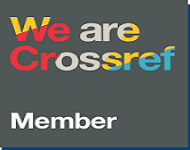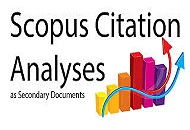Development of Gamification-Based HTML5 Interactive Learning Media for Human Digestive System in Elementary Education
DOI:
https://doi.org/10.33394/jp.v12i4.16814Keywords:
Interactive Learning Media, HTML5, GamificationAbstract
This study aims to develop interactive learning media based on HTML5 with a gamification approach to improve students' understanding, activeness, and learning motivation. This research used a Research and Development (R&D) method with the ADDIE model, consisting of five main stages: analysis, design, development, implementation, and evaluation. The validation process was carried out by three experts using a feasibility assessment instrument, followed by a limited trial with fifth-grade students at SD Negeri Inpres Malompo Elementary School. Data analysis was conducted quantitatively through validation questionnaires and student responses. The findings indicated that the media was considered "very feasible" in terms of content, visual appearance, and technical aspects, and was highly effective in helping students understand the concept of digestive organs interactively. This media offers an innovative alternative in science learning in elementary schools and has the potential for further development in other materials, contributing to the development of gamification-based digital media in elementary education.
References
Ariyani, N. M., & Ganing, I. K. (2022). Improving students' critical thinking through case-based flipbook learning media in science content for grade V of elementary school.Pulpit of Knowledge, 27(3), 443–452. https://doi.org/10.23887/mi.v27i3.52555
Astuti, D., Wijayanti, A., & Purnamasari, V. (2025). Development of interactive learning media based on STEAM in science learning for grade IV "Forces Around Us" at SDN 3 Surokonto Kulon.Journal of Educational Insight, 5(1), 302–316. https://doi.org/10.26877/jwp.v5i1.19994
Budi Tristanti, L., Akbar, S., Widya Ana Rahayu, and, Pattimura III, J., Kepanjen, S., Jalan Kh Wahid Hasyim, J., Pgri, S., & Jln Pattimura, J. V. (2021).Mosharafa: Journal of Mathematics Education The Effect of Construct-Based Educational Game Learning Media on Problem Solving Skills and Learning Outcomes of STKIP PGRI JOMBANG Students. 10(1). http://journal.institutpendidikan.ac.id/index.php/mosharafa
Dwi Agustin, M., & Zuhdi, U. (n.d.). (2021). DEVELOPMENT OF INTERACTIVE LEARNING MEDIA USING ARTICULATE STORYLINE 3 ON THE MATERIAL OF PROPERTIES AND CHANGES IN THE FORM OF OBJECTS TO IMPROVE THE LEARNING OUTCOMES OF GRADE V ELEMENTARY SCHOOL STUDENTS. Vol. 9 No. 08
Dwiki, A., & Febrinita, F. (2023). DESIGN OF EDUCATIONAL GAME “MARPILSAH” FOR EARLY CHILDHOOD BASED ON HTML5. InJournal of Informatics Engineering Students (Vol. 7, Issue 5).
Firdaus, Y. A., & Yermiandhoko, Y. (n.d.). (2020). DEVELOPMENT OF EDUCATIONAL GAME MEDIA “ISAAC’S ADVENTURES” BASED ON ANDROID ON STYLE MATERIAL OF GRADE IV ELEMENTARY SCHOOL (Vol. 08, Issue 02).
Firmansyah, L. F., Ahied, M., Tamam, B., Yuniasti, A., Wulandari, R., & Yasir, M. (2023). DEVELOPMENT OF HTML 5 BASED INTERACTIVE MULTIMEDIA ON SOLAR SYSTEM MATERIAL. InJurnal Natural Science Educational Research (Vol. 6, Issue 2).
Gentry, S.V. (2019). Serious gaming and gamification education in health professions: systematic review. Journal of Medical Internet Research, 21(3), ISSN 1438-8871, https://doi.org/10.2196/12994
Heriyanto. (2021). The effect of collaborative multiplayer gamification on motivation and learning outcomes. In National Seminar on Collaborative Learning in the Era and Post Pandemic. Bandung Institute of Technology
Himmah, E. F., Astutik, S., & Aristya, P. D. (2024). Development of HTML5-Based Mobile Learning Media to Enhance Critical Thinking Skills of Elementary School Students in IPAS Learning. Journal of Paedagogy, 11(4), 836. https://doi.org/10.33394/jp.v11i4.13065
Insan Peduli Informatics Halaman, J. (2024).HTML5-Based Mammal Animal Introduction Educational Game Published by LPPINPEST Journal homepage: https://ejournal.lppinpest.org/index.php/jipetik/index (Vol. 2, Issue 1). https://ejournal.lppinpest.org/index.php/jipetik/index
Jasadi, M., Nurhidayati, N., & Anjarini, T. (2021). Development of powtoon learning media based on critical thinking skills on the sub-theme "energy benefits" for grade IV elementary school. Dharmas Education Journal (De_journal), 2(2), 371-379.https://doi.org/10.56667/dejournal.v2i2.546
Jayadi, R., Suhendi, E., & Wulandari, S. (2021). The effect of gamification-based learning on students' learning motivation.CETTA: Journal of Mathematics and Science Education, 5(2), 123-134.
Kalogiannakis, M. (2021). Gamification in science education. A systematic review of the literature. Education Sciences, 11(1), 1-36, ISSN 2227-7102, https://doi.org/10.3390/educsci11010022
Karo-Karo, I. R., & Rohani, R. (2018).Benefits of Media in Learning. AXIOM: Journal of Education and Mathematics, 7(1), 91–96.
Latifah, A., Satria, E., & Kamaludin, A. (n.d.). (2022). Development of Classic Games as Learning Media for Animal Recognition Based on Their Food Types for Elementary School Students Based on Android. https://jurnal.itg.ac.id/
Manzano-León, A. (2021). Between level up and game over: A systematic literature review of gamification in education. Sustainability (Switzerland), 13(4), 1-14, ISSN 2071-1050, https://doi.org/10.3390/su13042247
Martín-Gutiérrez, J. (2017).Virtual technologies trends in education. Eurasia Journal of Mathematics, Science and Technology Education, 13(2), 469-486, ISSN 1305-8215, https://doi.org/10.12973/eurasia.2017.00626a
Mayrita, H. (2024). Design of an interactive digital encyclopedia of palembang urban culture on a web-based HTML5 platform as an implication for BIPA learning. Edelweiss Applied Science and Technology, 8(5), 633-647, ISSN 2576-8484, https://doi.org/10.55214/25768484.v8i5.1728
Morschheuser, B., Werder, K., Hamari, J., & Abe, J. (n.d.). How to gamify? A method for designing gamification. http://hdl.handle.net/10125/41308
Nasriah, N., Anggraini, E., Rahman, H., & Syah, D. (2023, June 26).HTML5-based Learning Media in the Educational Psychology Course. https://doi.org/10.4108/eai.24-11-2022.2332580
Prabawa, A., Ilfiana, A. N., & Maryani, I. (2022). Analysis of Science Learning Problems in Grade VI of Bangunrejo 2 Elementary School. National Seminar on the Results of the Implementation of the UAD School Field Introduction Program, pp. 875-877
Pratama, I. G. A. M., & Rachmadtullah, R. (2020). Development of human digestive system learning media oriented to Ausubel's learning theory for grade V elementary school.Mimbar Ilmu Journal, 26(1), 26–35.
Rahman, A. A., Sanda, E. A., Refugio, C. N., & Zulnaidi, H. (2023). HTML5 package media: How does it affect elementary school students’ concept understanding and self-efficacy? Al-Jabar: Journal of Mathematics Education, 14(2), 327. https://doi.org/10.24042/ajpm.v14i2.18129
Riyan Rinaldi, M., Napianto, R., Ghufroni An, M., & Corresponding Author, N. (2023). Elementary School Children's Counting Educational Game Using Mobile-Based RPG Maker. 4(1), 61–66. https://doi.org/10.33365/jtsi.v4i1.2440
Sabariah, S., Rufi’i, R., & Rusmawati, R. (2024). Google Site Training Assistance for Rich and Renewable Learning Resources for SMAN 1 Driyorejo Gresik.Characteristics: Indonesian Journal of Community Research and Engagement, 5(2), 565-578. https://doi.org/10.37680/amalee.v5i2.5632
Sabariah, S., Rufi’i, R., R, R. D. ., Sitompul, N. C., Elvianti, E. ., Anas Sulaiman, P. K., & Al-Ayyubi, S. (2024). Influence of Teacher Training on Technology Integration in Learning Media Development: The Influence of Teacher Training on Technology Integration in Learning Media Development.Thawalib: Journal of Islamic Education, 5(2), 473–480. https://doi.org/10.54150/thawalib.v5i2.485
Sabariah. (2023). Building Teachers Era Society 5.0.Published on 2011-07-23 10:53 PM
Subhash, S. (2018). Gamified learning in higher education: A systematic review of the literature. Computers in Human Behavior, 87, 192-206, ISSN 0747-5632, https://doi.org/10.1016/j.chb.2018.05.028
(2022).Educational research methods quantitative, qualitative, and R&D approaches(Latest edition). Alphabet.
Trisnawaty, F., & Slameto. (2017). Improving science learning outcomes through the use of demonstration methods in grade IV elementary school students.Satya Widya's Journal, 33(1), 37–44. https://doi.org/10.24246/j.sw.2017.v33.i1.p37-44
Ulin Naja, D., Nabhar, N., & Auliya, F. (2023). HTML5-BASED INTERACTIVE MATHEMATICS LEARNING MEDIA IN SPATIAL FIGURES USING ARTICULATE STORYLINE 3.Journal of Mathematics and Natural Sciences, 1. https://doi.org/10.3483/trigonometri.v1i1.800
Valentinna, C. R., Kurnianti, E. M., & Hasanah, U. (2023). Gamification learning media on increasing the learning motivation of primary school students. Basicedu Journal, 8(3), 1722–1732. https://doi.org/10.31004/basicedu.v8i3.7476
Vlachopoulos, D. (2017). The effect of games and simulations on higher education: a systematic literature review. International Journal of Educational Technology in Higher Education, 14(1), ISSN 2365-9440, https://doi.org/10.1186/s41239-017-0062-1
Widyastuti, R., & Sari Puspita, L. (2020).Development of Educational Game-Based Learning Media on the Thematic Science Subject of Environmental Cleanliness. 22(1). https://doi.org/10.31294/p.v21i2
Yildirim, I. (2017).The effects of gamification-based teaching practices on student achievement and students' attitudes toward lessons. Internet and Higher Education, 33, 86-92, ISSN 1096-7516, https://doi.org/10.1016/j.iheduc.2017.02.002
Yıldırım, S., & Demir, A. (2014). The impact of gamification on secondary school students' grammar achievement and motivation. Educational Sciences: Theory & Practice, 14(5), 1821–1826.
Zainuddin, Z. (2020).The impact of gamification on learning and instruction: A systematic review of empirical evidence. Educational Research Review, 30, ISSN 1747-938X,https://doi.org/10.1016/j.edurev.2020.100326
Zainuddin, Z., Chu, S. K. W., Shujahat, M., & Perera, C. J. (2020).
The impact of gamification on learning and instruction: A systematic review of empirical evidence. Educational Technology Research and Development, 68, 853–899.
https://doi.org/10.1007/s11423-020-09797-6
Zamani, A. Z., & Nurcahyo, H. (2016). Development of computer-assisted learning media to improve motivation and learning outcomes.Journal of Mathematics and Science Education, 4(1), 89–100. http://dx.doi.org/10.21831/jpms.v4i1.12937
Published
How to Cite
Issue
Section
Citation Check
License
Copyright (c) 2025 The Author(s)

This work is licensed under a Creative Commons Attribution-ShareAlike 4.0 International License.
License and Publishing Agreement
In submitting the manuscript to the journal, the authors certify that:
- They are authorized by their co-authors to enter into these arrangements.
- The work described has not been formally published before, except in the form of an abstract or as part of a published lecture, review, thesis, or overlay journal.
- That it is not under consideration for publication elsewhere,
- That its publication has been approved by all the author(s) and by the responsible authorities tacitly or explicitly of the institutes where the work has been carried out.
- They secure the right to reproduce any material that has already been published or copyrighted elsewhere.
- They agree to the following license and publishing agreement.
Copyright
Authors who publish with Jurnal Paedagogy agree to the following terms:
- Authors retain copyright and grant the journal right of first publication with the work simultaneously licensed under a Creative Commons Attribution License (CC BY-SA 4.0) that allows others to share the work with an acknowledgment of the work's authorship and initial publication in this journal.
- Authors are able to enter into separate, additional contractual arrangements for the non-exclusive distribution of the journal's published version of the work (e.g., post it to an institutional repository or publish it in a book), with an acknowledgment of its initial publication in this journal.
- Authors are permitted and encouraged to post their work online (e.g., in institutional repositories or on their website) prior to and during the submission process, as it can lead to productive exchanges, as well as earlier and greater citation of published work.
Licensing for Data Publication
-
Open Data Commons Attribution License, http://www.opendatacommons.org/licenses/by/1.0/ (default)






